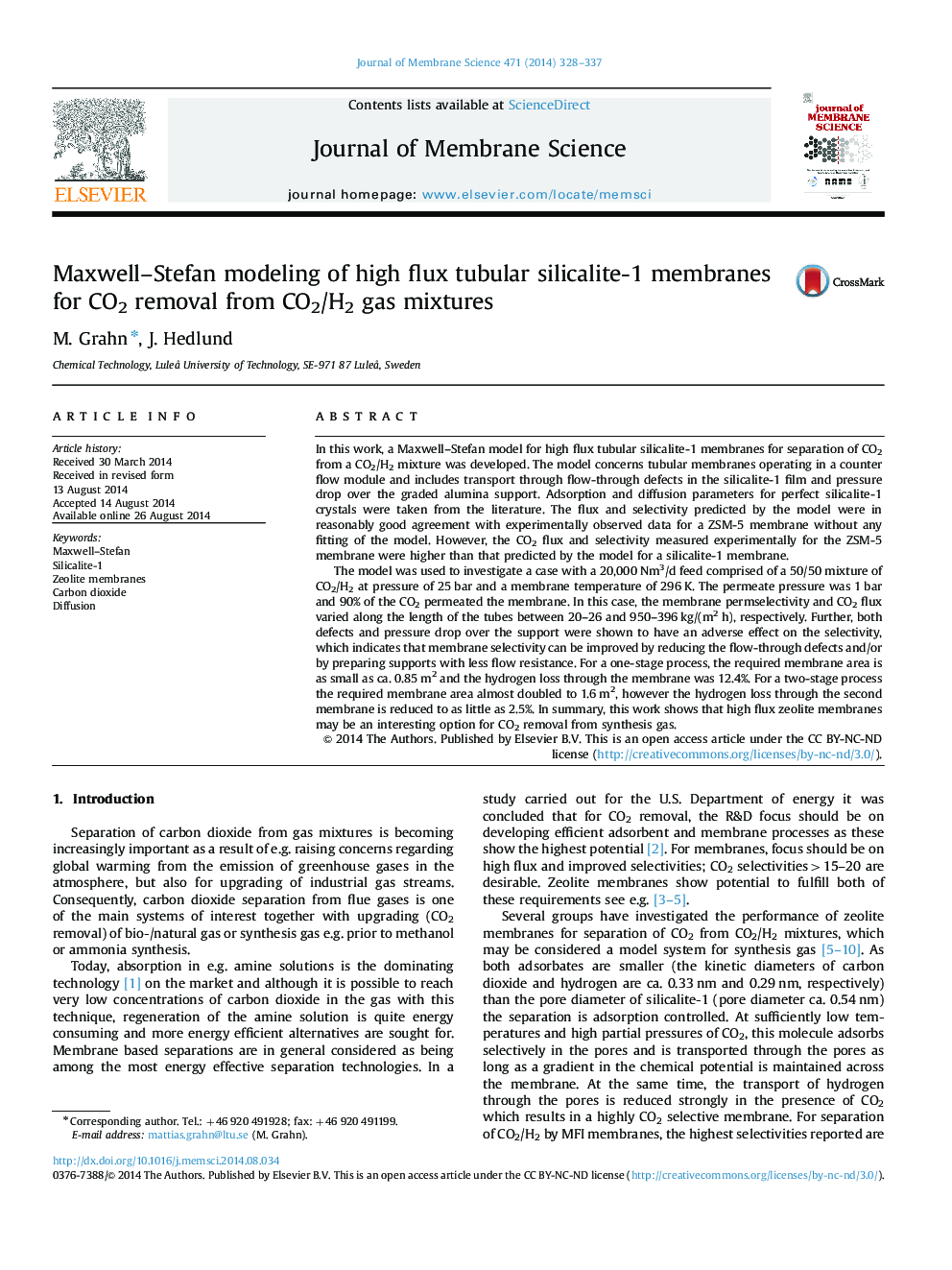| Article ID | Journal | Published Year | Pages | File Type |
|---|---|---|---|---|
| 7021995 | Journal of Membrane Science | 2014 | 10 Pages |
Abstract
The model was used to investigate a case with a 20,000Â Nm3/d feed comprised of a 50/50 mixture of CO2/H2 at pressure of 25Â bar and a membrane temperature of 296Â K. The permeate pressure was 1Â bar and 90% of the CO2 permeated the membrane. In this case, the membrane permselectivity and CO2 flux varied along the length of the tubes between 20-26 and 950-396Â kg/(m2Â h), respectively. Further, both defects and pressure drop over the support were shown to have an adverse effect on the selectivity, which indicates that membrane selectivity can be improved by reducing the flow-through defects and/or by preparing supports with less flow resistance. For a one-stage process, the required membrane area is as small as ca. 0.85Â m2 and the hydrogen loss through the membrane was 12.4%. For a two-stage process the required membrane area almost doubled to 1.6Â m2, however the hydrogen loss through the second membrane is reduced to as little as 2.5%. In summary, this work shows that high flux zeolite membranes may be an interesting option for CO2 removal from synthesis gas.
Related Topics
Physical Sciences and Engineering
Chemical Engineering
Filtration and Separation
Authors
M. Grahn, J. Hedlund,
